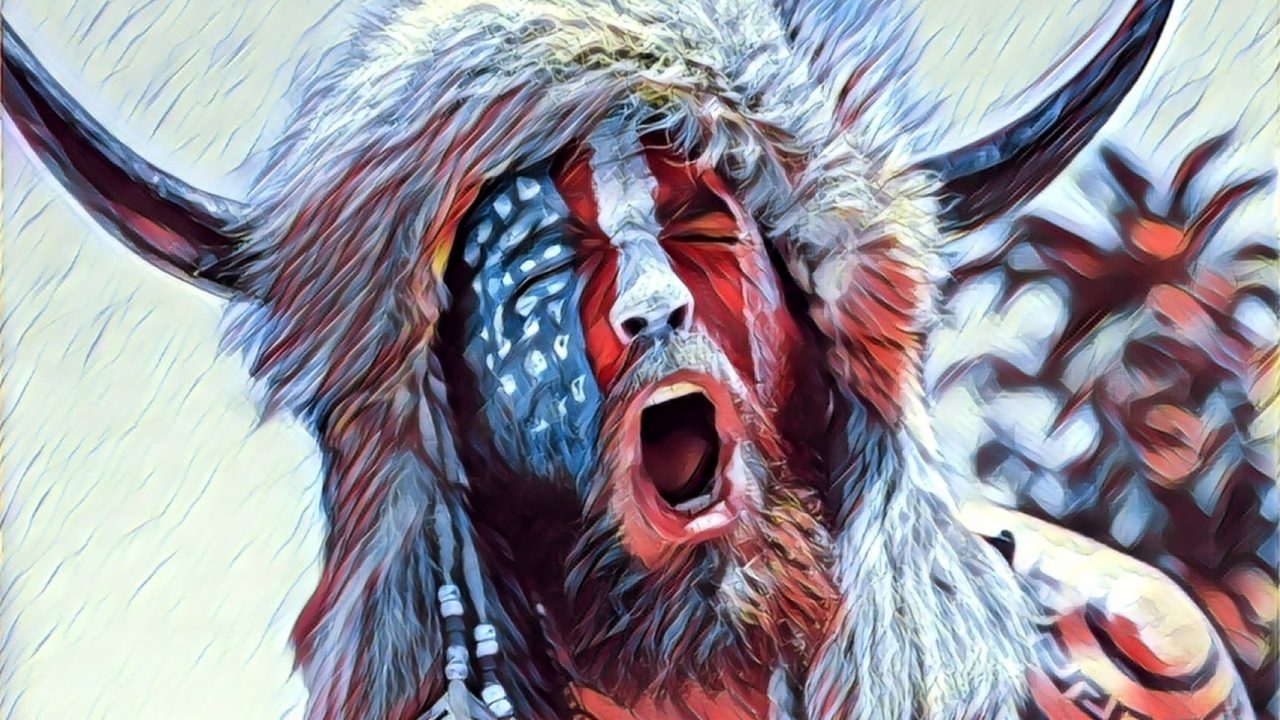Less than two months ago many Americans were throwing hosannas and celebrating if not the election of Joe Biden to the White House then the defeat of Donald J. Trump and, presumably, by extension the phenomenon that has been dubbed ‘Trumpism’ over the past few years. After said celebrations America seemed to quiet down. Trump, who had dominated the news cycle for his entire Presidency, was now, seemingly, receding into the background. Sure, there was the gripping of Trump allies like Rudy Guiliani and Ted Cruz that the election was fraudulent. But, on the whole, everything seemed a bit quieter in America after the outcome of the election was initially announced. A collective sigh of relief seemed to pervade the country. ‘Our national nightmare is finally over,’ seemed to be the thought on the minds of many in the United States.
Then on January, 6th 2021 a mob of pro-Trump supporters stormed D.C., eventually making their way into the Capitol Building and sending shockwaves through the nation. Violence erupted and a death toll of at least five people is being reported in the wake of this moment. The outrage was immediate and swift. Trump was chastised for egging on his base against both Democrats and those Republicans seen as disloyal to him in the lead up to the event. In the aftermath, the sitting President had to walk back his refusal to accept a peaceful transition of power on January 20th. Ted Cruz, one of Trump’s most prominent allies through the alleged ‘Election Fraud’ fiasco, called for Americans to come together and show unity rather than division after the blowback of the January 6th breach began gaining steam in the media and throughout American society. Speaker of the House Nancy Pelosi has threatened impeachment against Trump for inciting the violence. Reports are now coming in of participants in the January 6th breach of the Capitol being arrested. Donald Trump has been permanently banned from a number of social media websites, including Twitter and Facebook. Silicon Valley tech titans are chiming in as well as other major corporations to denounce Trump and the mob outbreak that occurred in D.C. Fears of censorship and crackdowns are beginning, mostly on the right-side of the political spectrum but also on the left, as this occurs. Meanwhile, everyday citizens of the nation at large remain shocked.
In other words, America’s collective sigh of relief was shattered by the events of January 6th, 2021. With that in mind it is hard to believe that on December 29th, 2020, only a week before the storming of the Capitol by diehard Trump devotees, that Slate, a popular online magazine dealing in current events from what is more or less seen as a centrist-liberal perspective, published an op-ed cheekily titled Keep Calm and QAnon. I said piece academic lecturer at and long-time researcher of political extremism Amarnath Amarasingam, whose work has been featured in such noted publications as The New York Times, The Atlantic, Politico, Foreign Affairs, and others, made the case that the pro-Trump conspircy theory/movement known as QAnon, which the FBI has designated a domestic terror threat, “may have actually discouraged postelection violence” in the aftermath of Joe Biden being declared the winner of the United States Presidential Race. In said article he notes the justifiable concerns raised by the volatility of QAnon proponents. Despite this, Amarsingam says the QAnon’s motto of ‘Trust the Plan’, which in the parlance of QAnon proponents means trusting that Trump and his patriotic inner circle still have tricks up their sleeves to defeat the alleged globalist deep state cabal at the center of this particular Grand Conspiracy Narrative, may have had the effect of keeping QAnon believers from trying to stop the peaceful transfer of power from President Trump to Joe Biden. Although Amarsingam does mention in the op-ed’s final paragraph that, in regards to how QAnon will respond to Trump leaving office, “there is no telling how some of them might respond” he nonetheless finished the piece by writing:
These conspiracy theories themselves seem to have, surprisingly, kicked the election-violence can down the road. Let’s hope they never find it.
To his credit, Amarsingam is careful not to completely write off the risk of post-election violence by QAnon and other pro-Trump elements. Only a week later Amarasingam’s Slate piece reads as being horribly off-the-mark. And yet it should be noted again that Amarsingam remained cautious to note dismiss the threat QAnon and assorted pro-Trump movements could have in the future. The sense of dread that calm could be interrupted by a storm, as ended up being exactly the case on January 6th, lurks in the background of Amarsingam’s greater hopes.
The same cannot necessarily be said of other articles dealing with QAnon in the aftermath of the Presidential election. Pieces in The New York Times, The Washington Post, and The Independent in November of last year reported indications of the QAnon movement experiencing a crisis of faith in light of Trump’s defeat. And although some of those reports noted that QAnon would likely find a way to continue onward in a post-Trump world, headlines like “Shocked by Trump’s Loss, QAnon Struggles to Keep the Faith”, “QAnon falls silent after election day”, and “‘My faith is shaken’: The QAnon conspiracy theory faces a post-Trump identity crisis” contribute to an overly pollyannaish attitude concerning QAnon, and more broadly what has been called “Trumpism”, quietly fading away with whimper.
Why was America blindsided by the January 6th, 2021 chaos on Capitol Hill or the fact that QAnon has maintained itself in spite of Trump’s electoral defeat by Joe Biden. I reached out to Stuart Wexler, a long-time researcher into far-right wing political extremism and the author of America’s Secret Jihad: The Hidden History of Religious Terrorism (Counterpoint, 2015), seeking some answers. “I think a lot of people rest their thoughts that QAnon was going to disappear or that things were going to dissipate on this underlying assumption that because QAnon invests so much in this prediction [of Trump winning] in relation to the election that when the prediction doesn’t come to pass that they’re going to give up on QAnon,” he told me.
“And that may be true of some,” Wexler continued, “But it ignores a whole bunch of literature, not just related to terrorism but to cults and religions as a whole, on cognitive dissonance and your ability to move the goal posts.”
Indeed, the psychological concept of cognitive dissonance may prove useful in understanding QAnon. In his classic 1957 work A Theory of Cognitive Dissonance, the social psychologist Leon Festinger attempted to explain how a person could hold thoughts, beliefs, and attitudes that were inconsistent with each other. “The existence of dissonance, being psychologically uncomfortable,” writes Festinger of individuals in a state of cognitive dissonance, “will motivate the person to try to reduce the dissonance and achieve consonance.” In this pursuit of restoring a sense of consistency the experiencer of cognitive dissonance, Festinger postulates, “will actively avoid situations and information which would likely increase the dissonance.”
This, of course, is where Wexler believes cognitive dissonance provides a clue in understanding QAnon’s persistence despite the repeated failures of its predictions to materialize. “If anybody ever follows QAnon they know that all QAnon does is make predictions that don’t come true,” Wexler told me, “Everyone and their pet hamster should be in Gitmo by now if the QAnon predictions came true.”
Relating a personal anecdote, Wexler recalled asking a QAnon believer, “Why do you buy this stuff.” When the QAnon believer claimed that some of the predictions came true Wexler shot back, “Oh really? Can you name me three?” According to Wexler the question went unanswered but the man’s faith in QAnon remained unshaken.
“All they do is move the goal posts. All they do is rationalization why their previous predictions come true,” Wexler told me before adding, “They may be one of the most profound examples of cognitive dissonance that has ever existed.”
As I speak to Wexler, a hard-nosed researcher that’s devoted a lifetime to understanding the history of the American far-right, I’m reminded that QAnon is arguably more than just a strange political movement based on an incredulous Grand Conspiracy Narrative. Perhaps part of the reason that QAnon and other associated variants of the far-right in America are often underestimated until events like the Capitol Hill breach of January 6th is that such phenomena are understood to be based merely in the realm of an exceedingly vulgar political worldview that bypasses the daunting challenge of facing complex social issues, problems, and structures by instead adopting an exceptionally simplistic, juvenile explanation of how the world.
That is, of course, part of the equation. The worldview of QAnon is one that trades in an interpretation of political events and machinations as part of a grand melodrama in which there are only conspiratorial villains and the heroic patriots who oppose their dastardly, sinister schemes. It is a worldview that seems less grounded in reality than in comic books, 80s actions movies, and John Wayne western. Simply put, anyone with an even slightly empiricist inclination views QAnon’s interpretation of how the world works as being delusional. But it is easy to forget that what the empiricist identifies as delusional the Gnostic-minded mystic convinced that they have discovered the hidden truth of it all.
Much has been made in the days since the Capitol siege of the now infamous ‘QAnon Shaman’ Jake Angeli who, along with the rest of the January 6th mob, broke into the Capitol Building. Angeli, however, stuck out amongst the sea of angry Trump supporters due to his unusual attire. Decked out in horns, fur, and patriotic face paint, the 32 year old voice actor looks more like an 80s pro wrestling fan cosplaying as The Ultimate Warrior than he does your typical diehard Trump or QAnon devotee. Angeli’s colorful get-up, however, makes more sense upon discovering he’s a so-called ‘self-initiated’ shaman with a penchant for taking psychedelic drugs and teaching courses in ‘spiritual self-defense’ among other things at his Star Seed Academy.
It would be unfair to demonize New Age spiritualists, mystics, and psychedelic drug users as, on the whole, falling into the same camp as Angeli (ie: participating in violent mob breaches of the Capitol). That being said it is in some way unsurprising that a mystically-minded individual like Angeli would fall down the far-right rabbit hole of QAnon. The connection between mysticism and far-right thought is perhaps best expressed in Umberto Eco’s essay Ur-Fascism. In said essay Eco list 14 traits that, while often contradictory to each other and also notable in other forms of belief, are often present in ‘Ur-Fascism’ or ‘Eternal Fascism:’
- The cult of tradition. “One has only to look at the syllabus of every fascist movement to find the major traditionalist thinkers. The Nazi gnosis was nourished by traditionalist, syncretistic, occult elements.”
- The rejection of modernism. “The Enlightenment, the Age of Reason, is seen as the beginning of modern depravity. In this sense, Ur-Fascism can be defined as irrationalism.”
- The cult of action for action’s sale. “Action being beautiful in itself, it must be taken before, or without, any previous reflection. Thinking is a form of emasculation.”
- Disagreement is treason. “The critical spirit makes distinctions, and to distinguish is a sign of modernism. In modern culture, the scientific community praises disagreement as a way to improve knowledge.”
- Fear of difference. “The first appeal of a fascist or prematurely fascist movement is an appeal against the intruders. Thus Ur-Fascism is racist by definition.”
- Appeal to social frustration. “[…] one of the most typical features of the historical fascism was the appeal to a frustrated middle class, a class suffering from an economic crisis or feelings of political humiliation, and frightened by the pressure of lower social groups.”
- The obsession with a plot. “The followers must feel besieged. The easiest way to solve the plot is the appeal to xenophobia.”
- The enemy is both weak and strong. “[…] the followers must be convinced that they can overwhelm the enemies. Thus, by a continuous shifting of rhetorical focus, the enemies are at the same time too strong and too weak.”
- Pacifism is trafficking with the enemy. “For Ur-Fascism there is no struggle for life but, rather, life is lived for struggle.”
- Contempt for the weak. “Elitism is a typical aspect of any reactionary ideology.”
- Everybody is educated to become a hero. “in Ur-Fascist ideology, heroism is the norm. This cult of heroism is strictly linked with the cult of death.”
- Machismo and Weaponry. “This is the origin of machismo (which implies both disdain for women and intolerance and condemnation of nonstandard sexual habits, from chastity to homosexuality). Since even sex is a difficult game to play, the Ur-Fascist hero tends to play with weapons—doing so becomes an ersatz phallic exercise.”
- Selective Populism. “There is in our future a TV or Internet populism, in which the emotional response of a selected group of citizens can be presented and accepted as the Voice of the People.
- Ur-Fascism speaks Newspeak. “All the Nazi or Fascist schoolbooks made use of an impoverished vocabulary, and an elementary syntax, in order to limit the instruments for complex and critical reasoning.”
What stands out in this list is how many of the features Eco outlines relate to a worldview that rejects an empirically based, materialist understanding of reality. Instead such a worldview inclines itself towards a kind of mythopoetics that revels in irrationality, hero worship, and grand narratives. Indeed, even far-right thinkers, have alluded to this in their own writings. For example, Jason Reza Jorjani, the former editor-in-chief of the far-right Arktos Media publishing outfit, explicitly argues for a return to the irrational and romantic in his book Prometheus and Atlas. Such sentiments can also be found in the works of far-right thinkers like Aleksander Dugin, Julius Evola, and others, but it is Jorjani who has made perhaps the far-right’s most explicit argument in favor of embracing the irrational and romantic above the empirical and material.
The implications of fascism, and more broadly the far-right as a whole, being driven by a ‘mythopoetic weltanschauung’ has major implications. The most important, at least in terms of this highly digressive attempt to better understand the events of January 6th, 2021, is that to anyone that doesn’t adhere to its mythopoetic conceptualization of the world or accept its wholesale embrace of the irrational and dogmatic the far-right’s understanding of reality would be so alien as to be thoroughly inconceivable.
My thoughts drifted towards these speculations as I continued my conversation with Stuart Wexler. The number one question on my mind was how so many were completely caught off guard by the chaos QAnon and other pro-Trump elements caused on Capitol Hill. After all, QAnon already had a track record for brewing trouble. And yet, as articles previously mentioned in this piece illustrate, a sense existed that QAnon was beginning, on some level at least, to falter before January 6th. Why did some have a false sense of calm before the storm?
During my conversation with Stuart Wexler, he managed to provide a fairly satisfactory answer to this question.
“So this idea that they [QAnon] were going to disappear,” Wexler said, “It was a lot of wishful thinking.”
“What may be the case is [that] they have to reorient themselves based on where they’re looking, for instance, at the messages that Donald Trump is sending,” he continued, “So they go from saying ‘We’re going to win the election on November 3rd and things are going to spring off’ to “Oh well, Trump is just waiting to do more things then he’s going to win the election and then things are going to spring off.”
Again, the sense that QAnon and other Trumpist diehards who stormed the Capitol fit into the sort of often self-contradicting mythopoetic worldview that Eco describes in “Ur-Fascism” continues to come to mind as Wexler and I continue our conversation. Despite all evidence to the contrary, QAnon’s proponents in the lead-up to January 6th persisted in the belief that their Trump would overturn the results of the election. QAnon had created a mythological narrative in which a hero and his allies were engaged in a battle of biblical proportions against an enemy, simultaneously portrayed as overwhelmingly powerful and at the same time on the run from the plot’s hero, for the very soul of humanity. It could all serve as the plot for a low-rent 80s action movie, and yet it also has the mythopoetic quality, in all its simplicity and juvenalia, that informs the far-right’s belief system.
What is key to understand at this point though is that QAnon is not the first movement of its ilk in the U.S. Nor is Trumpism. Movements like the Know-Nothing Party of the 1800’s and the John Birch Society of the Cold War era represent past iterations of the far-right that existed long before Trumpism. Incidents of violence or attempted violence perpetrated by far-right and neo-nazi organizations like The Order and The Covenant, the Sword, and the Arm of the Lord were occurring in the 1980s even if they’ve been forgotten today. And, of course, 21st century groups like the Oath Keepers are ultimately an updated version of the 1990s militia movement that became such a concern in the aftermath of the Oklahoma City Bombing. This is not to say that phenomena like QAnon, Trumpism, etc. are exactly like these past movements. They are, however, all part of the broader history of the far-right to which QAnon and Trumpism belong to. And, in our attention-economy driven age of short-term collective historical memory, it has often been overlooked that the far-right has a long history in the United States that did not start with Donald J. Trump’s Presidency.
“I mean, you can go back to Know Nothing Party type of things [or] go back to the 1800s” Wexler explains in this regard, “The more intense groups, what they do is they seem to reform out of that current all the time.
“And then the groups sometimes can be animated by a leader, sometimes they can be animated by a moment, an opportunity” he continues, “They definitely do go back. Ways back.”
“You can look at the Minutemen,” Wexler tells me, referring to the mid-20th century radical right wing group rather than the border patrol vigilantes that came to widespread prominence in the 2000s, “The folks who organized sort of larger scale militia type groups in the 1960s.”
“You look at their literature and there’s elements of QAnon-ish, Boogalo-ish stuff in what they’re talking about,” he adds.
The fact that Trumpism is just one more strange in long-line of far-right movements in American history is incredibly important to consider at this time. The hope of many opponents of Trumpism, QAnon, and related phenomena is that Trump himself was merely an aberration who gained traction through some kind of uncanny charisma. But if history is any indication the far-right will find another figure who will serve as the hero in its vision of a mythopoetic plot that’ll decide the fate of humanity. And that is what concerns Stuart Wexler the most.
“What I fear,” he says in regards to the future of the U.S far-right’s political relevance, “Is that Trump doesn’t even go away. Other people, even if he does, take on the mantle. They’re already self-reinforcing.without any kind of charismatic leader. They’re more pissed off than ever because of Democratic presence in Washington, D.C. And [then] we get mid-1980s to mid-1990s-style [far-right] terrorism.”
Given what just occurred in D.C. on January 6th and the fact that QAnon, despite the hopes of some that its influence was waning post-election, played such a huge role in the chaos it is hard not to share Wexler’s concerns. Only time will tell, but one thing is certain: the far-right has been with us for far longer than Donald Trump’s Presidency and it will remain with us even after he leaves the Oval Office. Until America contends with that fact and the far-right’s mythopoetic belief system it seems as if events like what occurred on January 6th, or potentially even worse, could continue to occur, sporadically or otherwise, in a post-Trump era.
Photo: The heritage of Trump – the Divided States of America (source: Freeimg.net, CC0)
The Barricade is an independent platform, which is supported financially by its readers. Become one of them! If you have enjoyed reading this article, support The Barricade’s existence! We need you! See how you can help – here!











